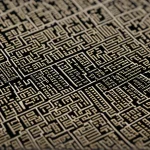Overview of Key Shifts in UK Women’s Fashion
The British fashion scene in 2024 is marked by dynamic shifts that reflect broader cultural and industry trends. One major change is the growing emphasis on individuality, with consumers seeking pieces that combine personal expression and sustainability. The UK fashion trends show a clear pivot towards versatile wardrobes that accommodate both comfort and style, responding to lifestyle changes post-pandemic.
Recent women’s fashion updates spotlight contributions from London Fashion Week, where designers blend nostalgic inspirations with modern silhouettes. Collections emphasize bold colours and experimental textures, capturing attention while promoting wearability. The influence of streetwear continues to infiltrate high fashion, forging a fusion that resonates with younger demographics.
Also to read : How Can UK Women Stay Ahead of Fashion Trends This Season?
Consumer priorities have evolved. Shoppers now value quality over quantity, focusing on durable materials and ethical production processes. This shift is coupled with a rising demand for transparency from brands regarding their supply chains. The evolving landscape positions UK fashion as both innovative and socially conscious, pushing the boundaries while staying grounded in cultural relevance.
Emerging Styles and Seasonal Looks
Exploring this season’s standout trends in the UK
Also to discover : How can UK women mix and match patterns for a bold fashion statement?
The latest styles UK for 2024 showcase a vibrant mix of bold expressions and practical wear. Key silhouettes this season blend relaxed tailoring with fluid forms, creating versatile shapes that transition effortlessly from day to evening. The seasonal fashion UK scene prominently features oversized blazers paired with wide-legged trousers, alongside cropped knitwear designed for layering.
Colour palettes lean towards saturated jewel tones—emerald greens, deep blues, and rich purples dominate, offering a fresh alternative to pastels. Prints have evolved beyond florals to geometrical and abstract patterns, reflecting a more modern taste. These details highlight the continuing synergy between artistic innovation and wearable design.
Designers at this year’s London Fashion Week introduced experiments in texture and fabric, such as manipulated velvet and recycled leather. These contribute to the season’s trend for combining comfort and edge in trending outfits. Popular combinations include pairing tailored pieces with chunky boots or mixing delicate lace with contemporary streetwear staples, illustrating the season’s diverse influences and adaptability across different settings.
Influential Designers and High-Profile Brands
The UK fashion designers leading the 2024 scene are pivotal in defining women’s style trends nationally and internationally. Names like Simone Rocha and Richard Quinn continue to influence designer trends women embrace, blending innovation with classic British aesthetics. Their collections at London Fashion Week underscore a commitment to craftsmanship and boundary-pushing design.
Collaborations between leading fashion brands and emerging talents are another catalyst for evolution. These partnerships often introduce fresh perspectives while enhancing production values, appealing to consumers who seek uniqueness and quality. For example, brands are increasingly experimenting with hybrid styles, merging streetwear with couture detailing, which resonates strongly in the current market.
Recognition from international runway coverage amplifies the reach of UK designers. When British brands receive acclaim abroad, it bolsters confidence in local industry innovation and supports export growth. This visibility encourages more investment in creative projects, reinforcing the vibrancy of the British fashion scene and inspiring upcoming designers to explore new concepts within women’s fashion updates.
Technology and Sustainability in Contemporary Fashion
Exploring sustainable fashion UK and tech-driven innovation
The sustainable fashion UK movement is reshaping women’s wardrobes with a clear focus on eco-friendly practices. Brands increasingly use organic fabrics, recycled materials, and low-impact dyes, reducing environmental footprints. This emphasis on eco-friendly trends women seek aligns closely with rising consumer demand for transparency in production and sourcing.
Advances in fashion technology contribute significantly to this transformation. Virtual try-ons enabled by augmented reality allow shoppers to experience outfits digitally, reducing the need for physical samples and returns—both beneficial for sustainability. Smart textiles, infused with features like temperature regulation and durability, blend innovation with practicality in daily wear.
Consumers today prioritize brands that demonstrate ethical commitments, prompting designers to adopt circular fashion principles such as repairability and recyclability. This integration of technology and sustainability not only meets eco-conscious expectations but also enhances the wearability and lifespan of clothing.
By embedding these elements into the British fashion scene, the industry supports responsible consumption while driving exciting new design possibilities. The fusion of sustainable fashion UK and technological innovation sets a precedent for future women’s fashion updates that are both stylish and conscientious.





